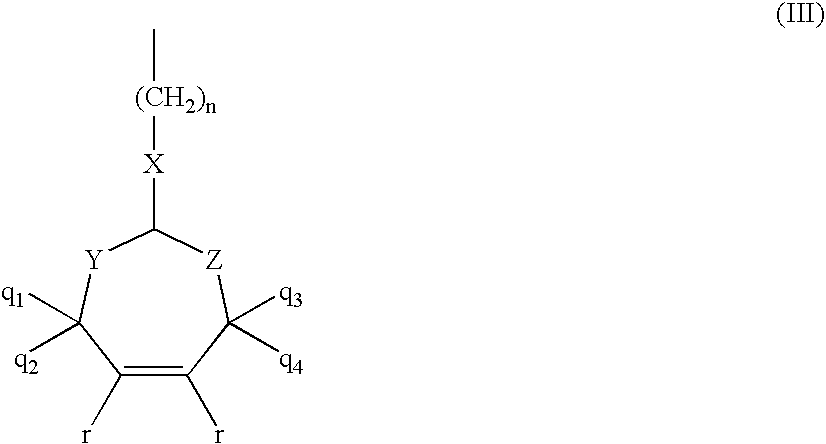Transition metal carboxylates as catalysts for oxygen scavenging
a technology of transition metal carboxylate and catalyst, which is applied in the direction of containers preventing decay, other chemical processes, explosives, etc., can solve the problems of scavenging packaging comprising transition metal catalysts, affecting the oxygen-sensitive packaging of packaged materials, and affecting the oxygen-sensitive packaging
- Summary
- Abstract
- Description
- Claims
- Application Information
AI Technical Summary
Benefits of technology
Problems solved by technology
Method used
Image
Examples
example 1
Examination of Cobalt Salt Selection on Organoleptics of Oxidized Oxygen Scavenging Films
[0068] Multilayer film structures were produced on a cast film line of the following structure: [0069] 0.5 mils LDPE / 0.5 mils OSP™ Blend / 0.5 mils LDPE
[0070] Two different core layer compositions were examined. In both samples, the core OSPTM layer was comprised of 90% ethylene methylacrylate cyclohexenyl methylacrylate (“EMCM”) and 10% masterbatch (masterbatch contains 1% cobalt and 1% photoinitiator). In Sample 1, the cobalt was delivered in the form of cobalt oleate. In Sample 2, the cobalt was delivered in the form of cobalt behenate. Ethylene methyl acrylate (EMAC) served as the carrier resin for both masterbatches.
[0071] Film samples were exposed to adequate amounts of UV to trigger the scavenging reaction, formed into pouches, and filled with 500 cc of spring water. Each pouch was then placed in a large foil pouch and sealed. A 400 cc headspace of air was then established in the foil po...
PUM
| Property | Measurement | Unit |
|---|---|---|
| weight fraction | aaaaa | aaaaa |
| thicknesses | aaaaa | aaaaa |
| thicknesses | aaaaa | aaaaa |
Abstract
Description
Claims
Application Information
 Login to View More
Login to View More - R&D
- Intellectual Property
- Life Sciences
- Materials
- Tech Scout
- Unparalleled Data Quality
- Higher Quality Content
- 60% Fewer Hallucinations
Browse by: Latest US Patents, China's latest patents, Technical Efficacy Thesaurus, Application Domain, Technology Topic, Popular Technical Reports.
© 2025 PatSnap. All rights reserved.Legal|Privacy policy|Modern Slavery Act Transparency Statement|Sitemap|About US| Contact US: help@patsnap.com



